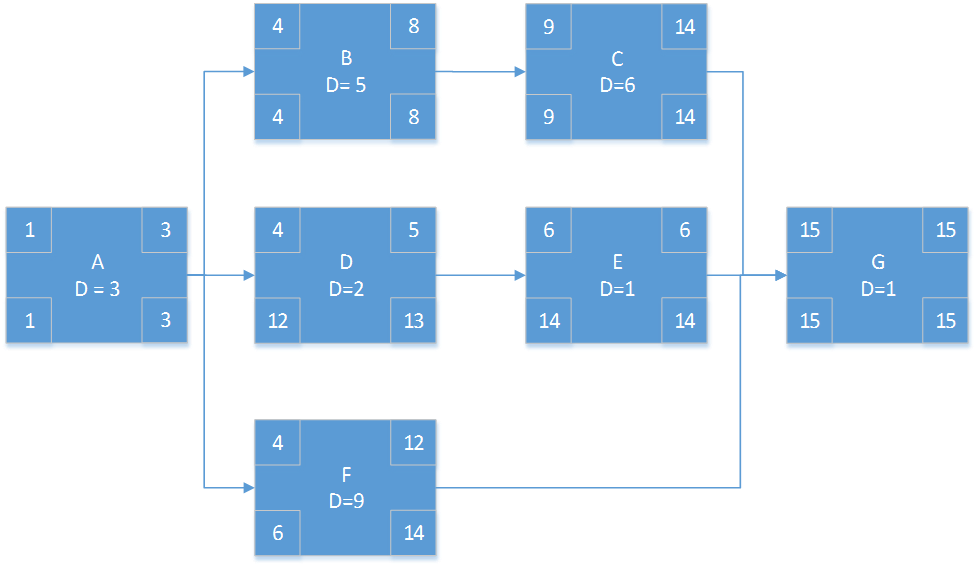This is the fifth in a series of posts on commonly confused terms for the PMP exam.
A Guide to the Project Management Body of Knowledge (PMBOK® Guide) defines:
Total Float: The amount of time that a scheduled activity can be delayed or extended from its early start date without delaying the project finish date or violating a schedule constraint.
Free Float: The amount of time that a scheduled activity can be delayed without delaying the early start of any successor or violating a schedule constraint.

Total Float is calculated using the formula LF-EF or LS-ES. The activities with 0 total float are critical path activities. So, in the above network diagram, A-B-C-G is the critical path and the total float for each of the activities on critical path is 0. The total float on non-critical path activities are D-8, E-8, and F-2. As is obvious from the above network diagram, critical path represents minimum project duration (assuming no resource constraint) and delay in any critical path activity will cause project delay. A positive value of total float on non-critical path activities states the activity can be delayed by the value of the total float without affecting the project’s schedule. For example, activity F can be delayed by 2 days without effecting the overall project schedule of 15 days. Do keep in mind, total float is most often refer to simply as “float” or “slack”.
Free Float is calculated using the formula ES (successor activity) – EF – 1 (or ES (successor activity) – EF when starting the critical path with 0). Read our blog post on Critical Path Calculations – Starting at 0 or 1 for a detailed discussion on this topic.
So, free floats for activities are D-0, E-8, and F-2. Can you see a clear pattern here? Free float is only available when two of more activities converge, in the above diagram C, E, F converges to G.
Outside the scope of PMI and PMP preparation, float has some very interesting applications in real life contracts. Other than to provide flexibility in the schedule and resource levelling opportunities during project planning, there has been a long standing debate in construction/engineering projects on who owns the contractor’s schedule float – the owner or the contractor. Based on most US court decisions on such disputes, float is a shared resource meant to be used by whosoever needs it first. On the other side of this argument is the contractor’s view point who creates and manages the schedules and uses float for risk mitigation. In a specific case, if an owner were to use a float and a major risk were to occur later, the contractor will not have any buffer and may suffer economic losses or pursue litigation. And, so the argument continues……
Your comments are welcome!
References:
Project Management Institute (PMI). (2013). A Guide to the Project Management Body of Knowledge (PMBOK® Guide) (5th ed.). Newtown Square, PA: Project Management Institute.
